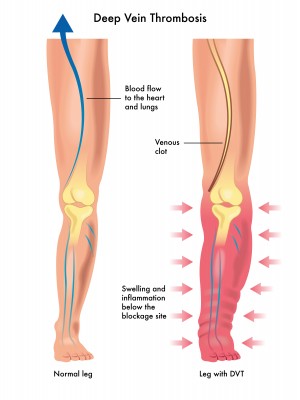Tips for Healthy Flights

Tips For Long Flights
- Stay hydrated.
- Use a cervical collar pillow to prevent your head from moving too much while you sleep.
- Get up and stretch and move around.
- Wear compression stocking.
- Avoid alcohol and caffeine drinks.
Staying Healthy During Long Flights
After a long flight, our bodies feel different due to the extended time in the man-made environment of an airplane cabin. While the airplane environment allows us to survive while flying several miles above the ground surface, it also impacts our bodies. The environment within the airplane cabin has reduced oxygen availability, decreased atmospheric pressure, decreased humidity and decreased room to move around.
These changes can cause temporary discomfort and fatigue, but they can also increase the risk for people with certain severe health-related conditions such as cancer patients, smokers with breathing difficulty, heart disease patients, pregnant women, the morbidly obese, and those who recently had an injury or surgery. High-risk individuals should seek a medical clearance from doctor prior to taking a trip in an airplane.
More common conditions can include deep vein thrombosis, dehydration, and jet lag. Most of the time, maintaining wellness during long flights is a matter of following a few simple steps.
Deep Vein Thrombosis

Deep Vein Thrombosis (DVT) resulting from immobility is one of the most severe health-related threats of air travel. During a long flight most people do not move around enough, and their ankles and feet can swell due to an increase in fluid retention in the legs. Moving around is important for blood flow.
When muscles contract, they “pump” blood and bodily fluids through the vascular system. Veins have one-way valves that open towards the heart and very little elastic property to their vascular wall. Without the muscular pump, the blood can “pool” in a body part. If someone is at risk of developing a clot, it can happen more easily when the “muscle pump” is not working well. DVT’s can cause pain, but the worst-case scenario is a piece of the clot “breaks” off and travels to the pulmonary arties, causing a blockage. This can cause death.
PREVENTION: Keep moving! Get up and walk and stretch. If you are in a situation where you cannot get out of your seat, “pump” your ankles and curl your toes. Do these motions forcefully and the muscle will contract. If you are going to be on a long flight or you fall into a high-risk category then you should wear compression stockinettes. Wear loose fitting shoes and clothing.
Cabin Air Quality
The air within the cabin is less humid and has less Oxygen in it during the flight. The humidity is usually in the 20% range, which is extremely dry. Your skin, lips, nose and eyes will become very dry. You will become dehydrated!
PREVENTION: Use lotions, nose spray and drink a lot of water. Avoid alcohol and caffeine drinks because they effect our ability to retain water and force us to urinate more frequently. Do not wear contact lenses. Wear your glasses and put your contacts in once you have landed and gotten off of the plane.
Cabin Air Pressure
The air pressure in the cabin during a flight is less than the air pressure at sea level. This reduces the body’s ability to use oxygen, leading to fatigue as well as an inability to concentrate and focus thoughts. The decreased pressure can also change the pressure and air in the inner ear and sinuses, cause pain, hearing difficulty and a feeling of “clogged” ears and pressure in the face.
PREVENTION: To combat the problems with the cabin air pressure chew gum or swallow to get an equalizing pressure in the inner ear. This is the “pop” that is felt and a reduction in the pressure feeling in the ears. Take decongestants or use nasal decongestant sprays before and during the flight to help reduce the size of the lining of the nasal membranes and sinuses.
Jet Lag
 Jet lag usually occurs when you travel extensively and cross many times zones. Headache, fatigue, nausea and difficulty sleeping are some of the common symptoms of jet lag.
Jet lag usually occurs when you travel extensively and cross many times zones. Headache, fatigue, nausea and difficulty sleeping are some of the common symptoms of jet lag.
PREVENTION: Stay hydrated and adjust your watch to your destination time zone. Try to live according to the time at the destination. If you have to take a nap, make it short (less than 2 hours). Try to be active and “force” yourself to continue with the itinerary of your trip.
Flying is a great way to travel and enables us to experience all parts of the world in a relatively short amount of “travel” time, but it can cause some major health related issues. If proper precautions are taken, most people can a have a safe and successful flight.
























